Discover 35 hidden attractions, cool sights, and unusual things to do in Moscow (Russia). Don't miss out on these must-see attractions: Red Square, Novodevichy Convent, and Tretyakov Gallery. Also, be sure to include Moscow Kremlin in your itinerary.
Below, you can find the list of the most amazing places you should visit in Moscow (Moscow City).
Table of Contents
Red Square
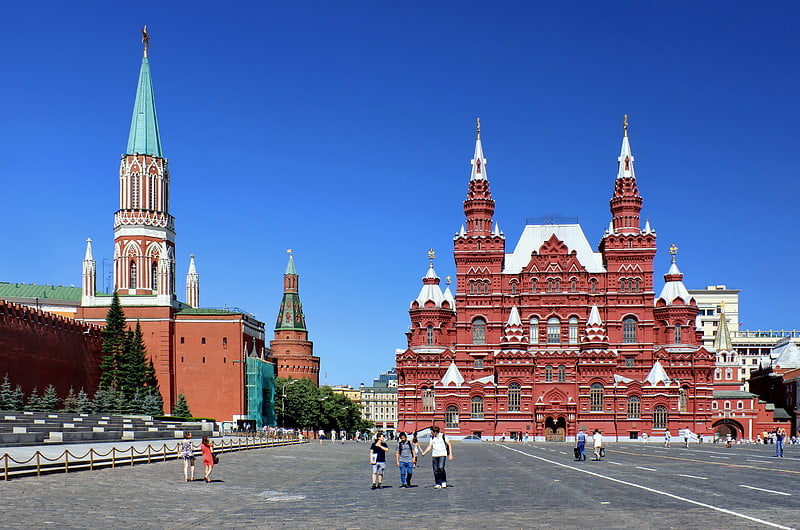
Also known as: Красная площадь
Landmark square and site of cathedral. Red Square is one of the oldest and largest squares in Moscow, the capital of Russia. Owing to its historical significance and the adjacent historical buildings, it is regarded as one of the most famous squares in Europe and the world. It is located in Moscow's historic centre, in the eastern walls of the Kremlin. It is the city landmark of Moscow, with iconic buildings such as Saint Basil's Cathedral, Lenin's Mausoleum and the GUM. In addition, it has been a UNESCO World Heritage Site since 1990.[1]
Novodevichy Convent
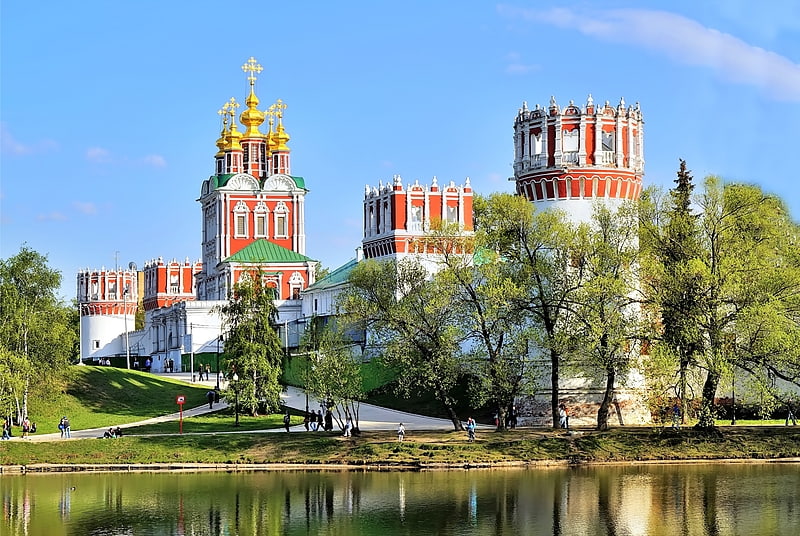
Also known as: Новодевичий монастырь
Landmark 16th-century religious complex. Novodevichy Convent, also known as Bogoroditse-Smolensky Monastery, is probably the best-known cloister of Moscow. Its name, sometimes translated as the New Maidens' Monastery, was devised to differ from the Old Maidens' Monastery within the Moscow Kremlin. Unlike other Moscow cloisters, it has remained virtually intact since the 17th century. In 2004, it was proclaimed a UNESCO World Heritage Site.[2]
Address: Novodevichy Passage, 1, 119435 Moskva (Центральный административный ок)
Tretyakov Gallery
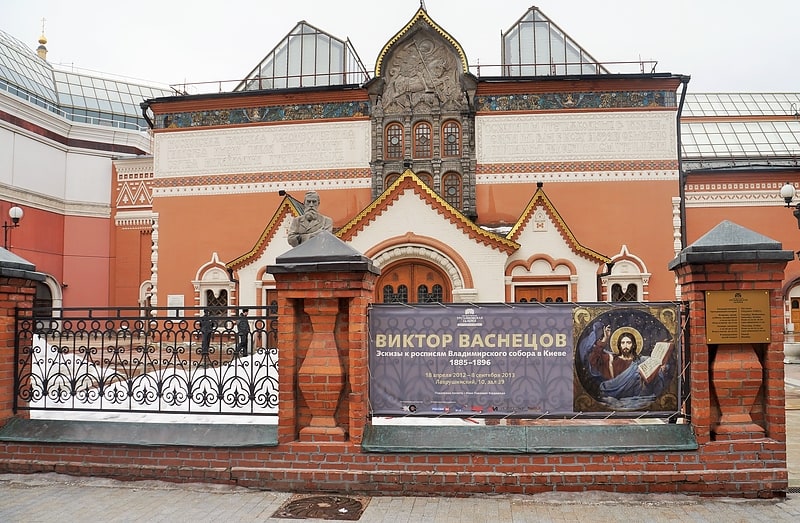
Also known as: Государственная Третьяковская галерея
Collection of 21st-century Russian art. The State Tretyakov Gallery is an art gallery in Moscow, Russia, the foremost depository of Russian fine art in the world.
The gallery's history starts in 1856 when the Moscow merchant Pavel Mikhailovich Tretyakov acquired works by Russian artists of his day with the aim of creating a collection, which might later grow into a museum of national art. In 1892, Tretyakov presented his already famous collection of approximately 2,000 works (1,362 paintings, 526 drawings, and 9 sculptures) to the Russian nation. The museum attracted 894,374 (visitors in 2020 (down 68 percent from 2019), due to the COVID-19 pandemic. It was 13th on the list of most-visited art museums in the world in 2020.
The façade of the gallery building was designed by the painter Viktor Vasnetsov in a peculiar Russian fairy-tale style. It was built in 1902–04 to the south from the Moscow Kremlin. During the 20th century, the gallery expanded to several neighboring buildings, including the 17th-century church of St. Nicholas in Tolmachi.
The collection contains more than 130,000 exhibits, ranging from Theotokos of Vladimir and Andrei Rublev's Trinity to the monumental Composition VII by Wassily Kandinsky and the Black Square by Kazimir Malevich.
In 1977 the Gallery kept a significant part of the George Costakis collection.
In May 2012, the Tretyakov Art Gallery played host to the prestigious FIDE World Chess Championship between Viswanathan Anand and Boris Gelfand as the organizers felt the event would promote both chess and art at the same time.[3]
Address: Lavrushinsky Ln, 10, 119017 Moskva (Центральный административный ок)
Moscow Kremlin
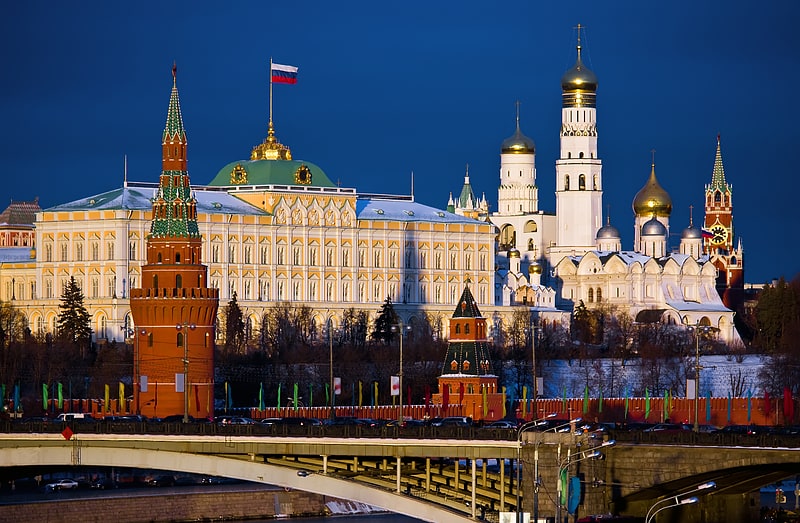
Also known as: Московский Кремль
Monumental architectural complex. The Kremlin is a fortified complex in the centre of Moscow founded by the ruling dynasty of Rurikids. It is the best known of the kremlins, and includes five palaces, four cathedrals, and the enclosing Kremlin Wall with Kremlin towers. In addition, within this complex is the Grand Kremlin Palace that was formerly the Tsar's Moscow residence. The complex now serves as the official residence of the President of the Russian Federation and as a museum with almost 3 million visitors in 2017. The Kremlin overlooks the Moskva River to the south, Saint Basil's Cathedral and Red Square to the east, and the Alexander Garden to the west.
The name "Kremlin" means "fortress inside a city", and is often also used metonymically to refer to the government of the Russian Federation. It previously referred to the government of the Soviet Union (1922–1991) and its highest members (such as general secretaries, premiers, presidents, ministers, and commissars). The term "Kremlinology" refers to the study of Soviet and Russian politics.
The Kremlin is open to the public and offers individual and group guided tours. Visible are the Armoury Chamber, Tsar Cannon, Tsar Bell, artillery pieces, and the exposition of Russian wooden sculpture and carvings.[4]
Address: Red Square 3, 125009 Moscow, Moscow (Центральный административный ок)
Saint Basil's Cathedral
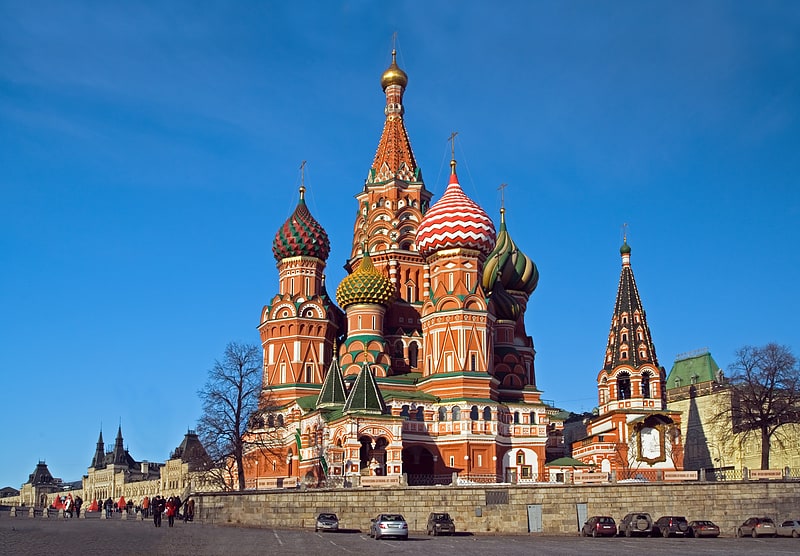
Also known as: Храм Василия Блаженного
Museum in iconic former Orthodox church. The Cathedral of Vasily the Blessed, commonly known as Saint Basil's Cathedral, is an Orthodox church in Red Square of Moscow, and is one of the most popular cultural symbols of Russia. The building, now a museum, is officially known as the Cathedral of the Intercession of the Most Holy Theotokos on the Moat, or Pokrovsky Cathedral. It was built from 1555 to 1561 on orders from Ivan the Terrible and commemorates the capture of Kazan and Astrakhan. It was the city's tallest building until the completion of the Ivan the Great Bell Tower in 1600.
The original building, known as Trinity Church and later Trinity Cathedral, contained eight chapels arranged around a ninth, central chapel dedicated to the Intercession; a tenth chapel was erected in 1588 over the grave of the venerated local saint Vasily (Basil). In the 16th and 17th centuries, the church, perceived (as with all churches in Byzantine Christianity) as the earthly symbol of the Heavenly City, was popularly known as the "Jerusalem" and served as an allegory of the Jerusalem Temple in the annual Palm Sunday parade attended by the Patriarch of Moscow and the Tsar.
The cathedral has nine domes (each one corresponding to a different church) and is shaped like the flame of a bonfire rising into the sky. Dmitry Shvidkovsky, in his book Russian Architecture and the West, states that "it is like no other Russian building. Nothing similar can be found in the entire millennium of Byzantine tradition from the fifth to the fifteenth century.. a strangeness that astonishes by its unexpectedness, complexity and dazzling interleaving of the manifold details of its design." The cathedral foreshadowed the climax of Russian national architecture in the 17th century.
As part of the program of state atheism, the church was confiscated from the Russian Orthodox community as part of the Soviet Union's antireligious campaigns and has operated as a division of the State Historical Museum since 1928. It was completely secularized in 1929, and remains a federal property of the Russian Federation. The church has been part of the Moscow Kremlin and Red Square UNESCO World Heritage Site since 1990. With the dissolution of the Soviet Union in 1991, weekly Orthodox Christian services with prayer to St. Basil have been restored since 1997.[5]
Address: Krasnaya Sq., 2, 109012 Moscow (Центральный административный ок)
Kolomenskoye
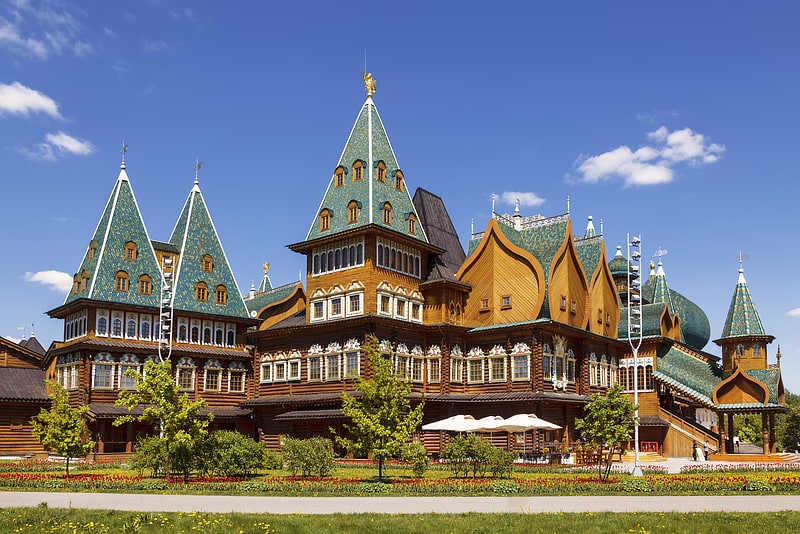
Also known as: Коломенское
Open-air museum with historic buildings. Kolomenskoye is a former royal estate situated several kilometers to the southeast of the city center of Moscow, Russia, on the ancient road leading to the town of Kolomna. The 390 hectare scenic area overlooks the steep banks of the Moskva River. It became a part of Moscow in the 1960s.[6]
Address: Andropova Ave, 39, 115487 Moskva (Южный административный округ)
Lenin's Mausoleum
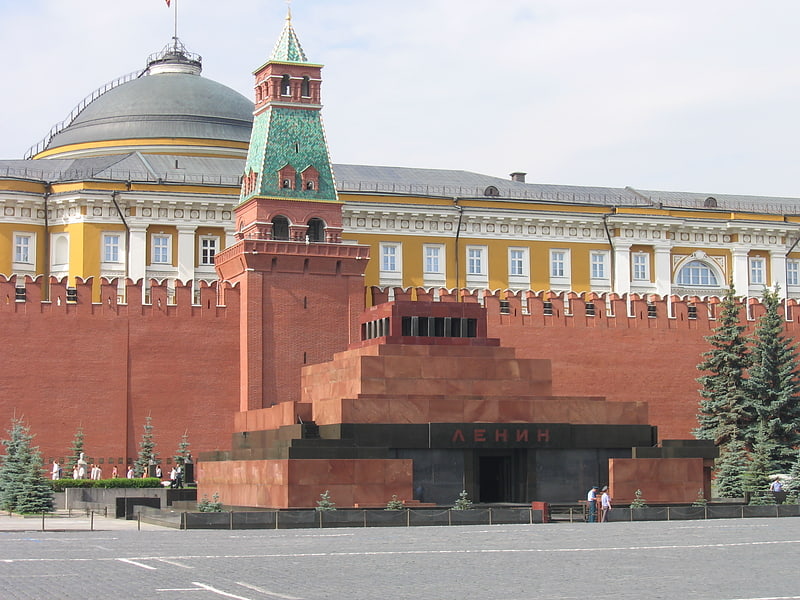
Also known as: Мавзолей Ленина
Memorial hall displaying Lenin's body. Lenin's Mausoleum, also known as Lenin's Tomb, situated on Red Square in the centre of Moscow, is a mausoleum that serves as the resting place of Soviet leader Vladimir Lenin. His preserved body has been on public display there since shortly after his death in 1924, with rare exceptions in wartime. Alexey Shchusev's diminutive but monumental granite structure incorporates some elements from ancient mausoleums, such as the Step Pyramid, the Tomb of Cyrus the Great and, to some degree, the Temple of the Inscriptions.[7]
Address: Red Square, 109012 Moskva (Центральный административный ок)
Exhibition of Achievements of National Economy
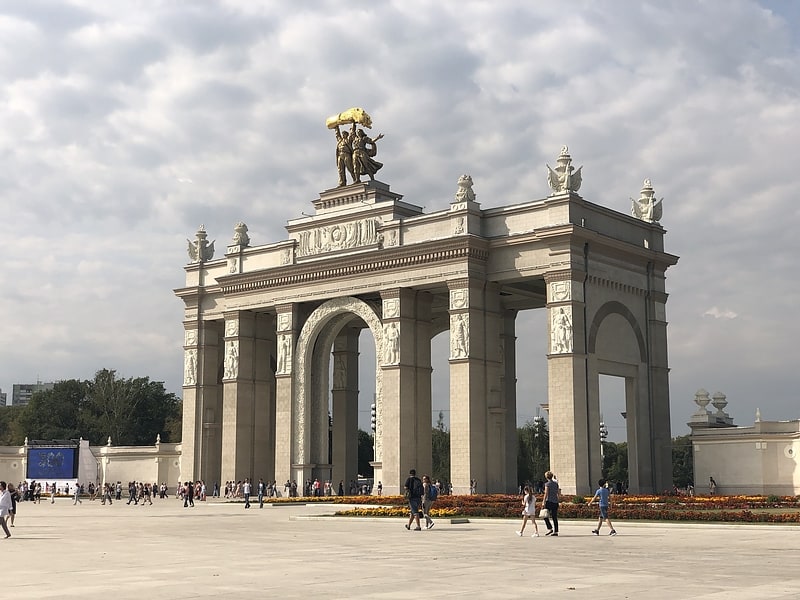
Also known as: Выставка достижений народного хозяйства
Exhibition and trade centre in Moscow, Russia. Exhibition of Achievements of National Economy is a permanent general purpose trade show and amusement park in Moscow, Russia. Between 1991 and 2014, it was also called the All-Russia Exhibition Centre. It is a state joint-stock company.
CEO — Sergey Shogurov.[8]
Address: Prospekt Mira, 119ВВЦс18, 129223 Moskva (Северо-Восточный административн)
Museum of the Great Patriotic War
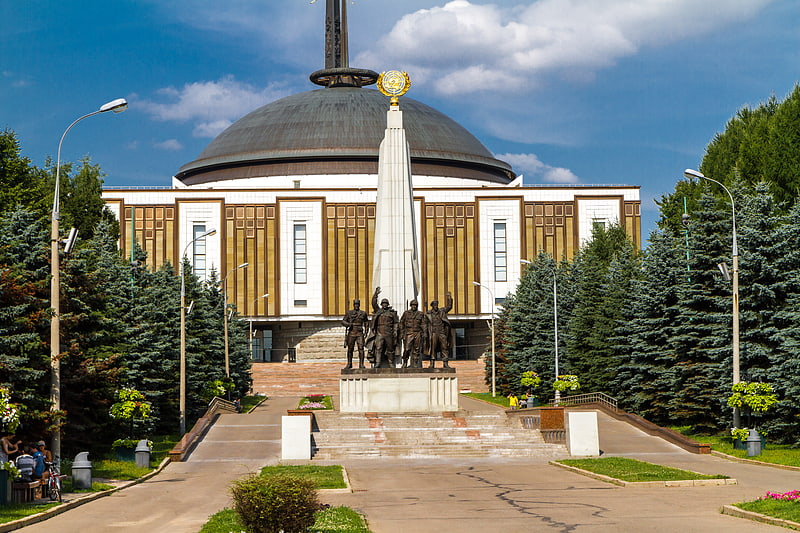
Also known as: Музей Победы
Museum charting Russia's role in WWII. The Museum of the Great Patriotic War is a history museum located in Moscow at Poklonnaya Gora. The building was designed by architect Anatoly Polyansky. Work on the museum began on March 3, 1986, and the museum was opened to the public on May 9, 1995. The museum features exhibits and memorials concerning the Eastern Front of World War II, known in Russia as "The Great Patriotic War".[9]
Address: Ploshchad' Pobedy, 3, 121170 Moskva (Западный административный округ)
Tverskaya Street

Also known as: Тверская улица
Street in Moscow, Russia. Tverskaya Street, known between 1935 and 1990 as Gorky Street, is the main radial street in Moscow. The street runs Northwest from the central Manege Square in the direction of Saint Petersburg and terminates at the Garden Ring, giving the name to Tverskoy District. The route continues further as First Tverskaya-Yamskaya Street, Leningradsky Avenue and Leningradskoye Highway.[10]
Kuznetsky Most
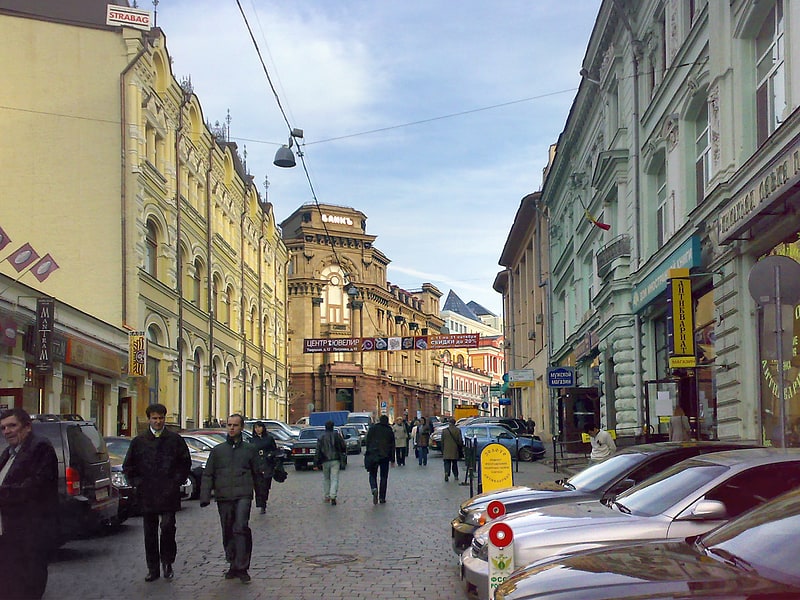
Also known as: Кузнецкий Мост
Street in Moscow, Russia. Kuznetsky Most is a street in central Moscow, that runs from Bolshaya Dmitrovka Street to Lubyanka Street. The name, literally Blacksmith's Bridge, refers to the 18th-century bridge over Neglinnaya River, now running in a tunnel, and a nearby foundry and the settlement of its workers. Since the middle of the 18th century, Kuznetsky Most was the street of fashion and expensive shopping.
The street is administered by Tverskoy District (west) and Meshchansky District (east).[11]
Address: Ulitsa Kuznetskiy Most, 19, 107031 Moskva (Центральный административный ок)
Dormition Cathedral
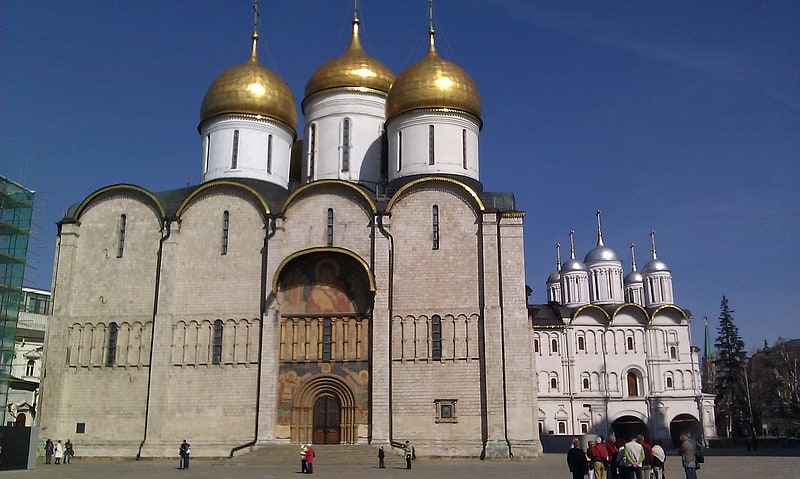
Also known as: Успенский собор
Russian Orthodox medieval cathedral. The Cathedral of the Dormition, also known as the Assumption Cathedral or Cathedral of the Assumption, is a Russian Orthodox church dedicated to the Dormition of the Theotokos. It is located on the north side of Cathedral Square of the Moscow Kremlin in Russia, where a narrow alley separates the north from the Patriarch's Palace with the Twelve Apostles Church. Separately in the southwest, also separated by a narrow passage from the church, stands the Palace of Facets. The Cathedral is regarded as the mother church of Muscovite Russia. In its present form it was constructed between 1475 and 1479 at the behest of the Moscow Grand Duke Ivan III to a design by the Italian architect Aristotele Fioravanti. From 1547 to 1896 the coronation of Russian monarchs took place here. In addition, the cathedral is the burial place for most of the Moscow Metropolitans and Patriarchs of the Russian Orthodox Church; it also serves as a part of Moscow Kremlin Museums.[12]
Address: Московский Кремль, Moscow (Центральный административный ок)
Spasskaya Tower
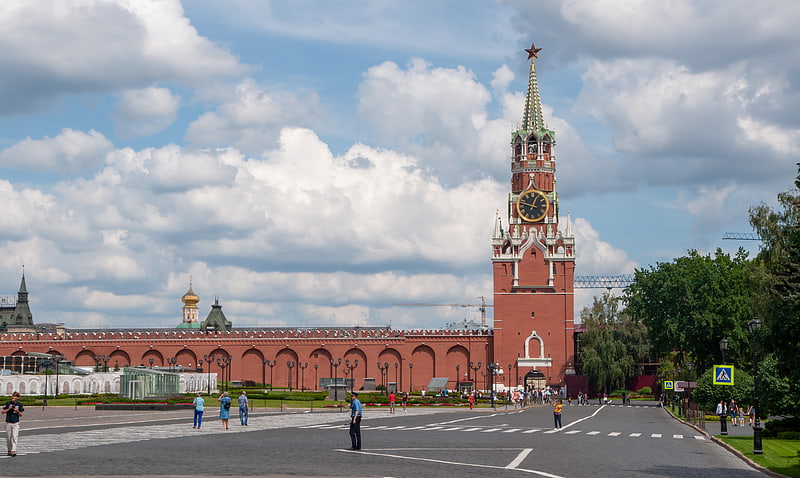
Also known as: Спасская башня
Tower in Moscow, Russia. The Spasskaya Tower, translated as 'Saviour Tower', is the main tower on the eastern wall of the Moscow Kremlin which overlooks Red Square.[13]
Address: Московский Кремль, Moscow (Центральный административный ок)
Stoleshnikov Lane
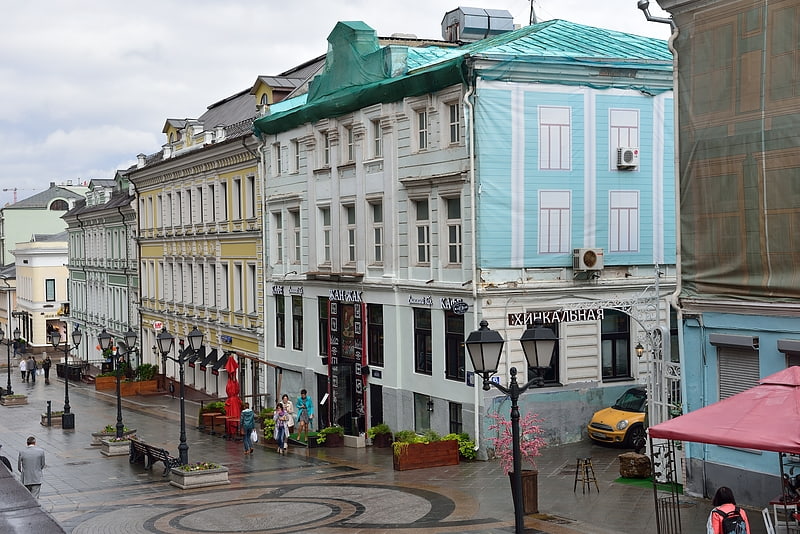
Also known as: Столешников переулок
Street in Moscow, Russia. Stoleshnikov Pereulok or Stoleshnikov Lane is a short street with boutiques and shops with many luxury goods located within the Boulevard Ring in central Moscow and known as one of the most expensive shopping areas in the world.
The street runs from Tverskaya Street in the west, to Petrovka Street in the east.[14]
Address: Pereulok Stoleshnikov, Moscow (Центральный административный ок)
Pushkin Museum
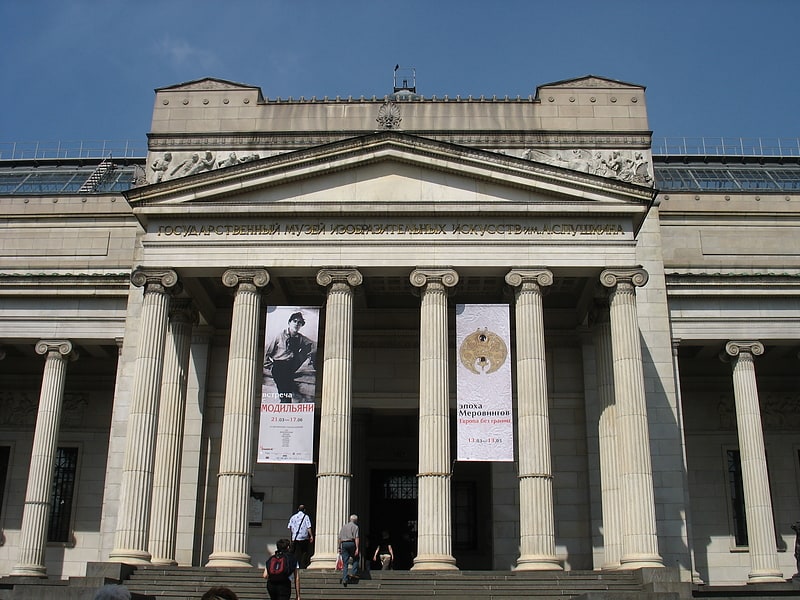
Also known as: Государственный музей изобразительных искусств имени А. С. Пушкина
European painting and sculpture collection. The Pushkin State Museum of Fine Arts is the largest museum of European art in Moscow, located in Volkhonka street, just opposite the Cathedral of Christ the Saviour. The International musical festival Sviatoslav Richter's December nights has been held in the Pushkin Museum since 1981.[15]
Address: Ulitsa Volkhonka, 12, 119019 Moskva (Центральный административный ок)
Ostankino Palace

Also known as: Останкино
18th-century estate with a museum and park. Ostankino Palace is a former summer residence and private opera theatre of Sheremetev family, originally situated several kilometres to the north from Moscow but now a part of the North-Eastern Administrative Okrug of Moscow. Extant historical Ostankino includes the main wooden palace, built in 1792–1798 around a theater hall, with adjacent Egyptian and Italian pavilions, a 17th-century Trinity church, and fragments of the old Ostankino park with a replica of Milovzor folly.[16]
Address: 1-я Останкинская ул., 5, 129515 Москва (Северо-Восточный административн)
Moscow Zoo
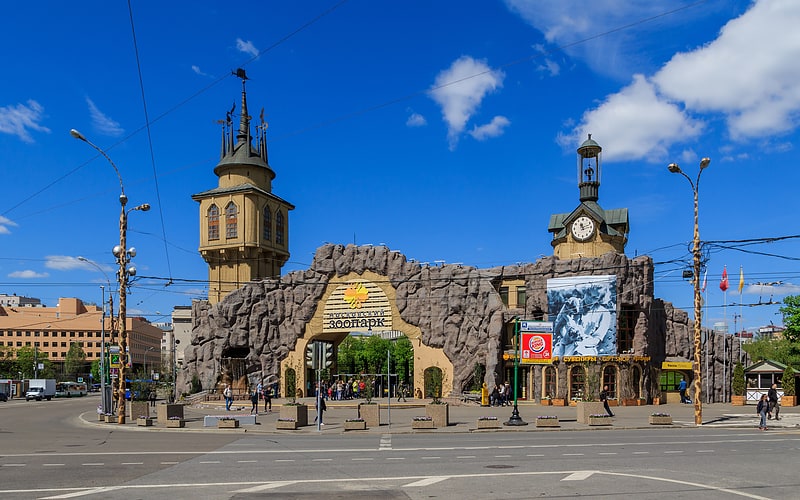
Also known as: Московский зоопарк
Zoo in Moscow, Russia. The Moscow Zoo or Moskovsky Zoopark is a 21.5-hectare zoo founded in 1864 by professor-biologists, K.F. Rulje, S.A. Usov and A.P. Bogdanov, from the Moscow State University. In 1919, the zoo was nationalized. In 1922, the ownership was transferred to the Government of Moscow and has remained under Moscow's control ever since.
The zoo had an area of 10 hectares (25 acres) when it first opened, with 286 animals. In 1926, the zoo was expanded to adjacent lands, increasing the area to 18 hectares (44 acres). The zoo's original buildings were wooden, built in the old Russian style with intricate wood trims.
In 1990, the zoo was renovated. Notable additions include a new main entrance in the shape of a large rock castle, and a footbridge that connected the old (1864) and new (1926) properties of the zoo. Prior to construction of the footbridge, the zoo operated as two 'separate zoos' because the Bolshaya Gruzinskaya Street divides the properties.
In addition, the zoo was expanded once more. New exhibits were opened including a sea aquarium, an aviary, a creatures of the night exhibit, a sea lion exhibit and a section aimed at children. Waterfalls and streams were added throughout to give the zoo a more natural feeling.
The Moscow zoo has over 7,500 animals representing about 1,000 species and covers an area of about 21.5 hectares (53 acres). The zoo studies animal's behavior, feeding and reproduction, and breeds rare endangered species.
Some of the species at the zoo are:
- Marsupial (Marsupialia)
- Didelphimorphia (Didelphidae)
- Dasyuromorphia (Dasyuridae)
- Macropod (Macropodidae)
- Insectivora (Insectivora)
- Erinaceidae (Erinaceidae)
- Elephant shrew (Macroscelididae)
- Treeshrew (Tupaiidae)
- Bat (Chiroptera)
- Megabat (Pteropodidae)
- Primate (Primates)
- Lemuridae (Lemuridae)
- Lorisidae (Lorisidae)
- Cebidae (Cebidae)
- (Callithricidae)
- Old World monkey (Cercopithecidae)
- Hominid (Pongidae)
- Xenarthra (Edentata)
- Sloth (Bradypodidae)
- Armadillo (Dasypodidae)
- Lagomorpha (Lagomorpha)
- Leporidae (Leporidae)
- Rodent (Rodentia)
- Carnivora (Carnivora)
- Bear (Ursidae)
- Brown bear (Ursus arctos)
- Pinniped (Pinnipedia)
- Cetacean (Cetacea)
- Bottlenose dolphin (Tursiops truncates)
- Bear (Ursidae)
- Proboscidea (Proboscidea)
- Elephant (Elephantidae)
- Odd-toed ungulate (Perissodactyla)
- Equidae (Equidae)
- Even-toed ungulate (Artiodactyla)
- Suidae (Suidae)
- Camelid (Camelidae)
- Deer (Cervidae)
- Giraffidae (Giraffidae)
- Bovid (Bovidae)
Address: Bolshaya Gruzinskaya Street, 1, 123242 Moskva (Центральный административный ок)
Kazan Cathedral
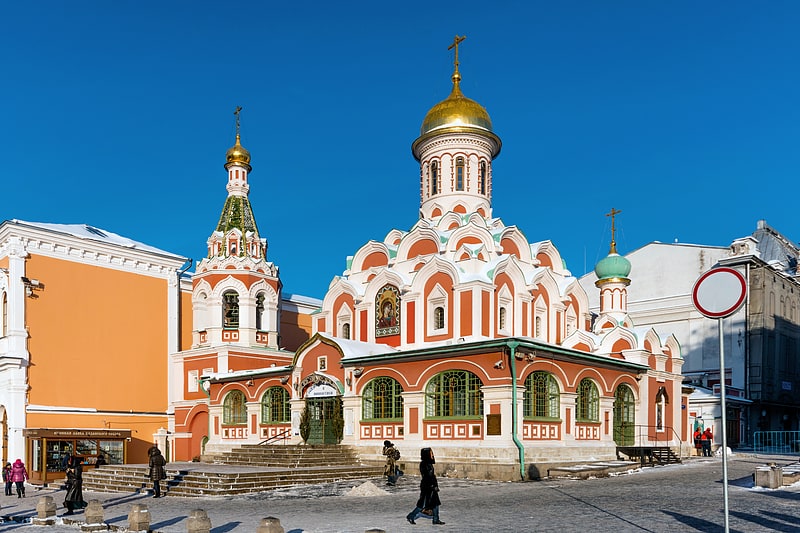
Also known as: Казанский собор
Colourful rebuild of 1600s holy edifice. Kazan Cathedral, formally known as the "Cathedral of Our Lady of Kazan", is a Russian Orthodox church located on the northwest corner of Red Square in Moscow, Russia. The current building is a reconstruction of the original church, which was destroyed at the direction of then General Secretary of the Central Committee of the Communist Party of the Soviet Union, Joseph Stalin, in 1936.[18]
Address: Red Square, 109012 Moskva (Центральный административный ок)
Tomb of the Unknown Soldier
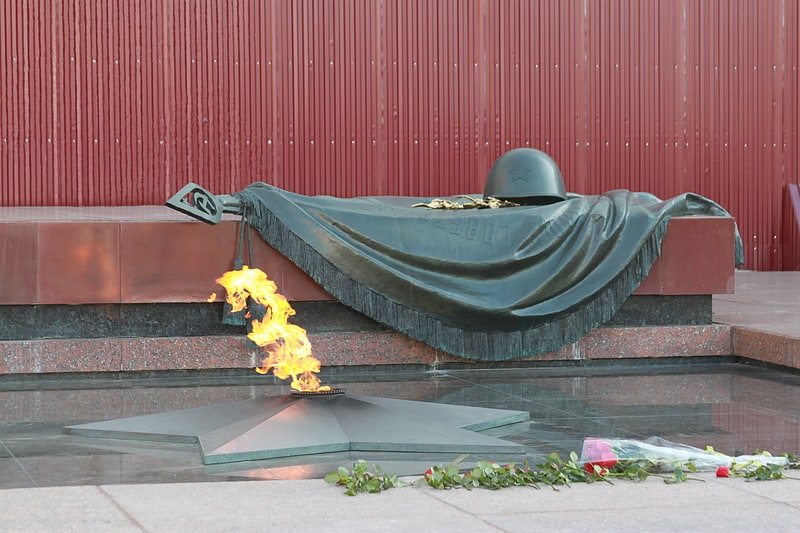
Also known as: Могила Неизвестного Солдата
Historical landmark in Moscow, Russia. The Tomb of the Unknown Soldier is a war memorial dedicated to the Soviet soldiers killed during World War II. It was designed by architects D. I. Burdin, V. A. Klimov, Yu. R. Rabayev and sculptor Nikolai Tomsky.[19]
Address: Александровский сад, Moscow (Центральный административный ок)
State Historical Museum
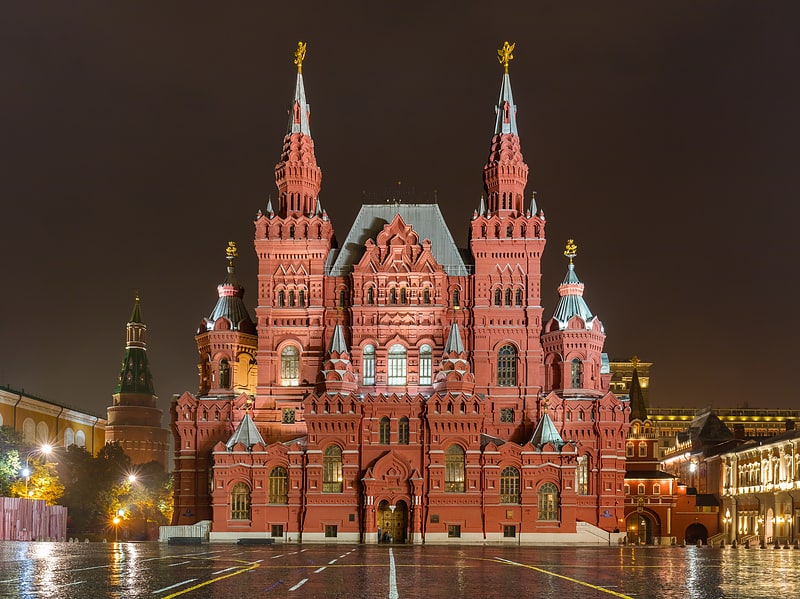
Also known as: Государственный исторический музей
Landmark museum of Russian history. The State Historical Museum of Russia is a museum of Russian history located between Red Square and Manege Square in Moscow. The museum's exhibitions range from relics of prehistoric tribes that lived in the territory of present-day Russia, to priceless artworks acquired by members of the Romanov dynasty. The total number of objects in the museum's collection numbers in the millions.[20]
Address: Red Square, 1, 109012 Moskva (Центральный административный ок)
Ostankino Tower
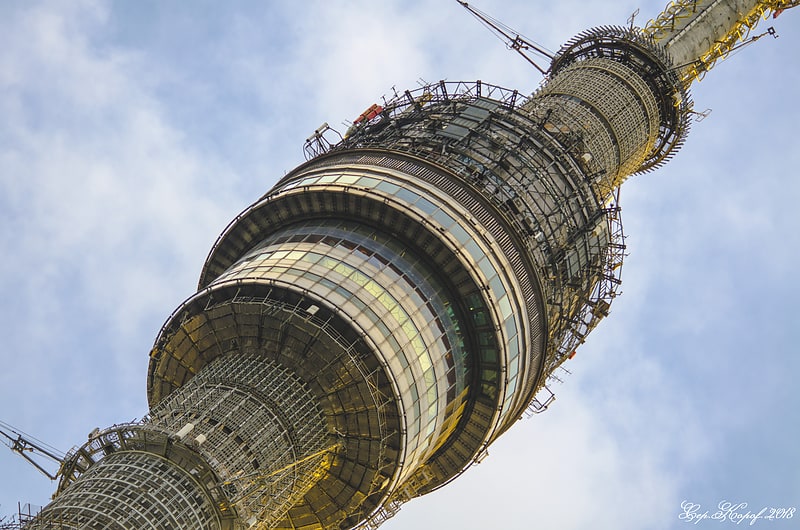
Also known as: Останкинская телебашня
Rocket-like TV tower with viewing deck. Ostankino Tower is a television and radio tower in Moscow, Russia, owned by the Moscow branch of unitary enterprise Russian TV and Radio Broadcasting Network. Standing 540.1 metres, it was designed by Nikolai Nikitin. As of 2022, it is the tallest free-standing structure in Europe and 11th tallest in the world. Between 1967 and 1974, it was the tallest in the world. The tower was the first free-standing structure to exceed 500 m in height. Ostankino was built to mark the 50th anniversary of the October Revolution. It is named after the surrounding Ostankino district of Moscow.[21]
Address: ул. Академика Королёва, 15, корп. 1, 129075 Москва (Северо-Восточный административн)
Gorky Museum
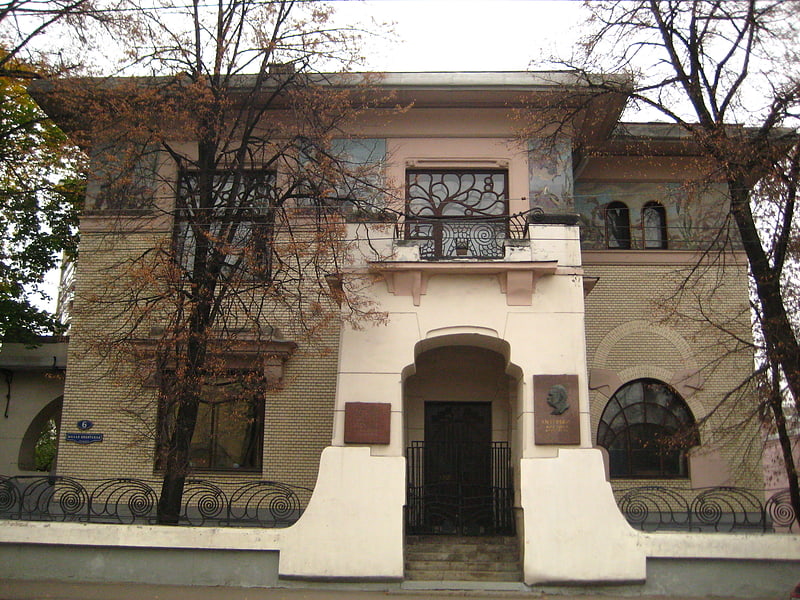
The Gorky Museum is an architectural landmark of the "Moderne" style, the Russian term for Art Nouveau. It was built in Moscow in 1900–02 by the architect Fyodor Schechtel. It is also known as the Ryabouchinsky House, for the young Russian industrialist and art collector who built it. After the Russian Revolution in 1917, the Ryabouchinsky family emigrated to France. In 1931 the Soviet government offered the house to the writer Maxim Gorky and his family. It was his home until his death in 1936. The widow of Gorky's son continued to live in the house until her death in 1965. It then became the Gorky Museum, dedicated to his life and work. It is located in the historic center of Moscow, at 6 Malaya Nikitskaya. Admission is free.[22]
Alexander Garden
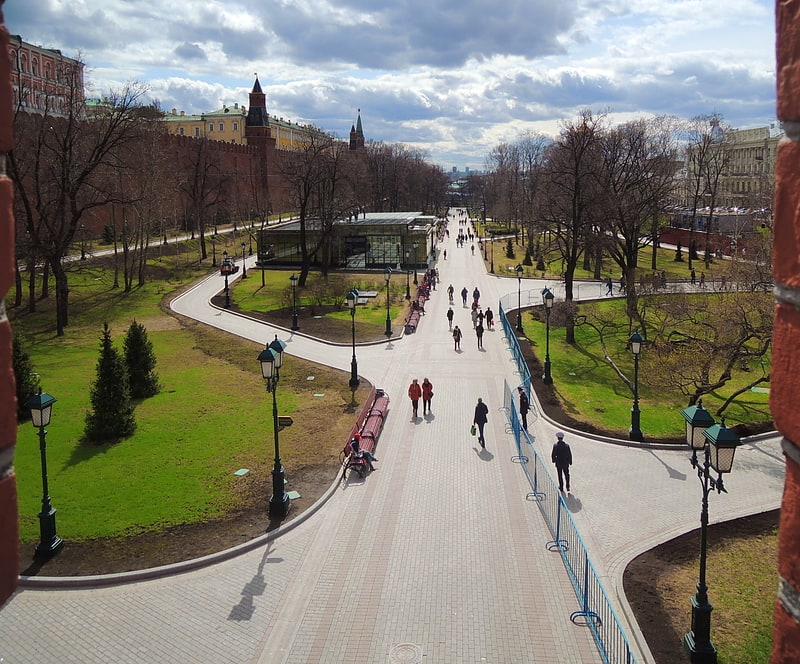
Also known as: Александровский сад
Landmark park with memorials and monuments. Alexander Gardens was one of the first urban public parks in Moscow, Russia. The park comprises three separate gardens, which stretch along all the length of the western Kremlin wall for 865 metres between the building of the Moscow Manege and the Kremlin.[23]
Address: Kitay-gorod, Red Square, Moscow (Центральный административный ок)
Moscow Kremlin Museums
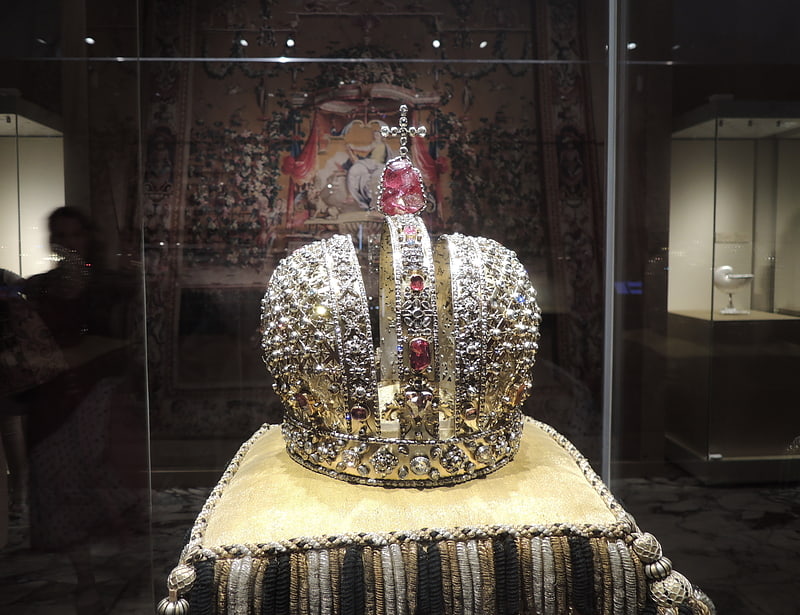
Museum. Moscow Kremlin Museums is a major state-run museum in Moscow Kremlin. Its roots lie in the Kremlin Armoury museum founded in 1806, the current form of the museum started in 1991. The Head of the museum is Yelena Gagarina, daughter of cosmonaut Yuri Gagarin. There were 424,922 visitors to the Kremlin Museums in 2020, a drop of 86 percent from 2019 due to the COVID-19 pandemic, but it still ranked 46th on the List of most-visited art museums in the world in 2020.
Moscow Kremlin Museums have the following parts:
- Kremlin Armoury
- Diamond Fund
- Dormition Cathedral
- Cathedral of the Archangel
- Cathedral of the Annunciation
- Residence of Patriarchs and Church of the Twelve Apostles
- Church of the Deposition of the Robe
- Ivan the Great Bell Tower
Grand Kremlin Palace
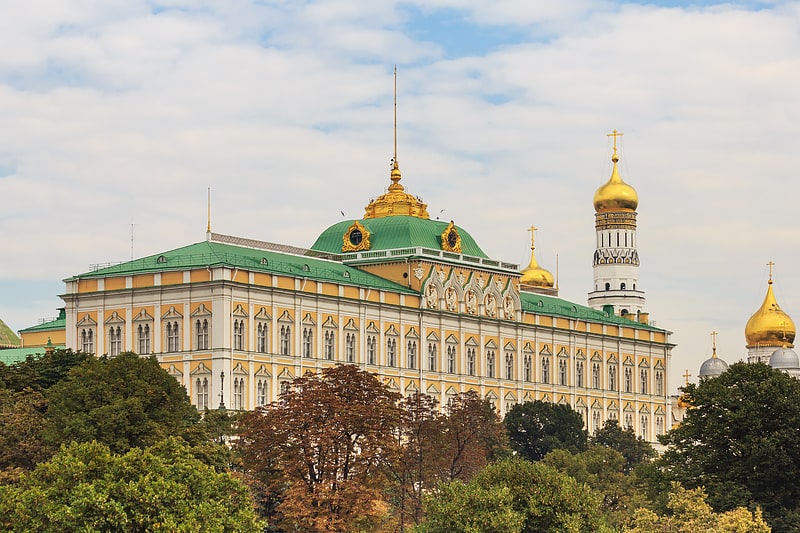
Also known as: Большой Кремлёвский дворец
Huge 19th-century palace at the Kremlin. The Grand Kremlin Palace, also translated Big Kremlin Palace or Great Kremlin Palace, was built from 1837 to 1849 in Moscow, Russia on the site of the estate of the Grand Princes, which had been established in the 14th century on Borovitsky Hill. Designed by a team of architects under the management of Konstantin Thon, it was intended to emphasise the greatness of Russian autocracy. Konstantin Thon was also the architect of the Kremlin Armoury and the Cathedral of Christ the Savior.[25]
Poklonnaya Hill

Also known as: Поклонная гора
Strategic site with victory monuments. Poklonnaya Gora is, at 171.5 meters, one of the highest natural spots in Moscow. Its two summits used to be separated by the Setun River, until one of the summits was razed in 1987. Since 1936, the area has been part of Moscow and now contains the Victory Park with many tanks and other vehicles used in the Second World War on display.
Historically, the hill had great strategic importance, as it commanded the best view of the Russian capital. Its name is derived from the Russian for "to bow down", as everyone approaching the capital from the west was expected to do homage here. During the French invasion of Russia in 1812, it was the spot where Napoleon in vain expected the keys to the Kremlin to be brought to him by Russians.[26]
Address: Western the administrative okrug, Plosch. Pobedy (пл. Победы), 3, Moscow (Западный административный округ)
Donskoy Monastery
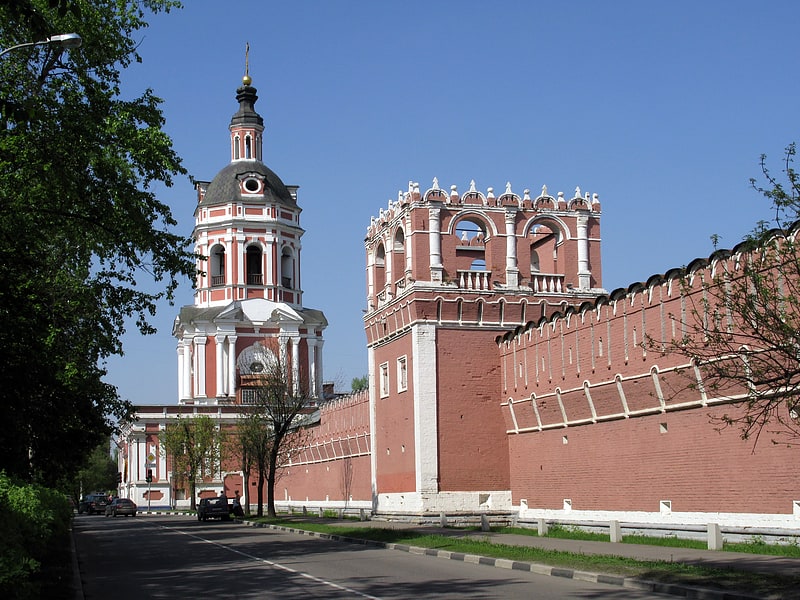
Also known as: Донской монастырь
Monastery in Moscow, Russia. Donskoy Monastery is a major monastery in Moscow, founded in 1591 in commemoration of Moscow's deliverance from the threat of an invasion by the Crimean Khan Kazy-Girey. Commanding a highway to the Crimea, the monastery was intended to defend southern approaches to the Moscow Kremlin.[27]
Address: Ulitsa Donskaya, 1-3, 115419 Moskva (Южный административный округ)
Bolshoi Theatre
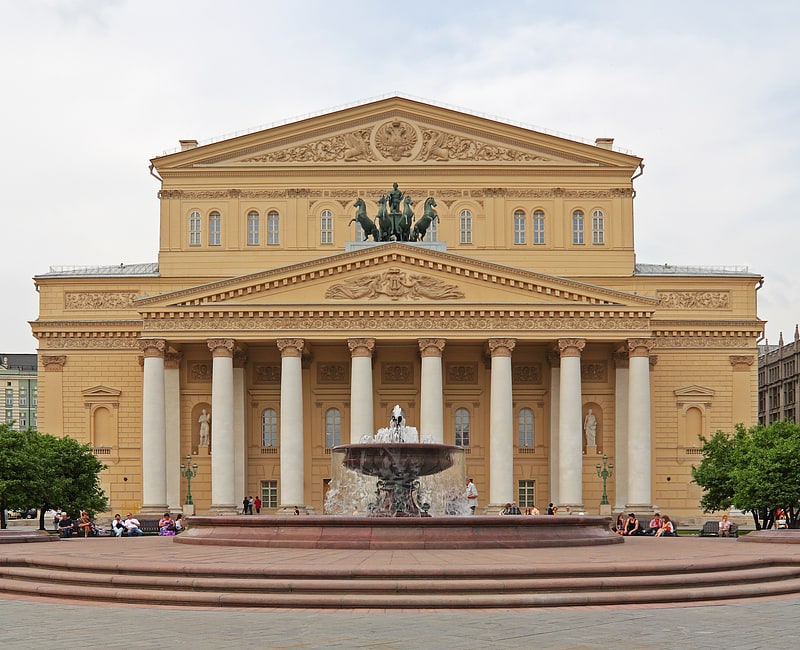
Also known as: Большой театр
Iconic home of Russian ballet and opera. The Bolshoi Theatre is a historic theatre in Moscow, Russia, originally designed by architect Joseph Bové, which holds ballet and opera performances. Before the October Revolution it was a part of the Imperial Theatres of the Russian Empire along with Maly Theatre in Moscow and a few theatres in Saint Petersburg.
The Bolshoi Ballet and Bolshoi Opera are among the oldest and best known ballet and opera companies in the world. It is by far the world's biggest ballet company, with more than 200 dancers. The theatre is the parent company of The Bolshoi Ballet Academy, a leading school of ballet. It has a branch at the Bolshoi Theater School in Joinville, Brazil.
The main building of the theatre, rebuilt and renovated several times during its history, is a landmark of Moscow and Russia (its iconic neoclassical façade is depicted on the Russian 100-ruble banknote). On 28 October 2011, the Bolshoi re-opened after an extensive six-year renovation. The official cost of the renovation is 21 billion rubles ($688 million). However, other Russian authorities and other people connected to it claimed much more public money was spent. The renovation included restoring acoustics to the original quality (which had been lost during the Soviet Era), as well as restoring the original Imperial decor of the Bolshoi.[28]
Address: Moscow, Teatralnaya Square 1
Monument to Minin and Pozharsky
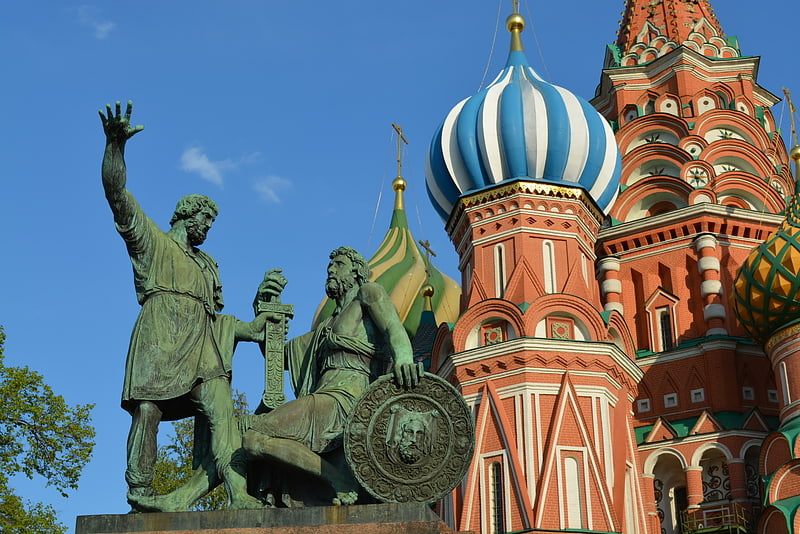
Also known as: Памятник Минину и Пожарскому
Bronze statue of Russian patriots. The Monument to Minin and Pozharsky is a bronze statue designed by Ivan Martos and located on the Red Square in Moscow, Russia, in front of Saint Basil's Cathedral. The statue commemorates Prince Dmitry Pozharsky and Kuzma Minin, who gathered an all-Russian volunteer army and expelled the forces of the Polish–Lithuanian Commonwealth under the command of King Sigismund III of Poland from Moscow, thus putting an end to the Time of Troubles in 1612.
The monument was conceived by the Free Society of Lovers of Literature, Science, and the Arts to commemorate the 200th anniversary of those events. Construction was funded by public conscription in Nizhny Novgorod, the city from where Minin and Pozharsky came to save Moscow. Tsar Alexander I, however, decided the monument should be installed on Red Square next to the Moscow Kremlin rather than in Nizhny Novgorod. The competition for the best design was won by the celebrated sculptor Ivan Martos in 1808. Martos completed a model, which was approved by Dowager Empress Maria Feodorovna and the Russian Academy of Fine Arts in 1813. Casting work using 500 kilograms (1,100 lb) of copper was carried out in 1816 in St Petersburg. The base, made of three massive blocks of granite from Finland, was also carved at St Petersburg. Moving the statue and base to Moscow presented logistical challenges and was accomplished in winter by using the frozen waterways. However, in the wake of Napoleon's invasion of Russia, the monument could not be unveiled until 1818.
The front of the base carries a bronze plaque depicting a scene of patriotic citizens sacrificing their property for the benefit of the motherland. On the left is an image of the sculptor Martos giving away his two sons (one of whom was killed in 1813)
Originally, the statue stood in the centre of Red Square, with Minin extending his hand towards the Moscow Kremlin. However, after the 1917 Revolution, the Communist authorities found the monument was obstructing parades on the square and discussed its demolition or transfer to some indoor museum. In 1936, the statue was moved closer to the cathedral where it remains to the present day.
On the first celebration of the Unity Day (November 4, 2005) an almost exact copy of this monument by Zurab Tsereteli was erected in Nizhny Novgorod. The copy is 5 cm shorter than the Moscow original.
As it was originally conceived by the sculptor Martos, Prince Pozharsky and Minin were standing side by side. But nobility opposed the concept. It wasn't appropriate for people of different classes to be portrayed on equal terms. Martos redesigned the concept. He has turned the 17th-century heroes of the resistance into ancient history characters. Inequality is highlighted by clothing. Noble prince is in a toga, Minin is in a shirt and trousers.[29]
Address: Red Square, 613310 Moscow (Центральный административный ок)
Tretyakovsky Proyezd
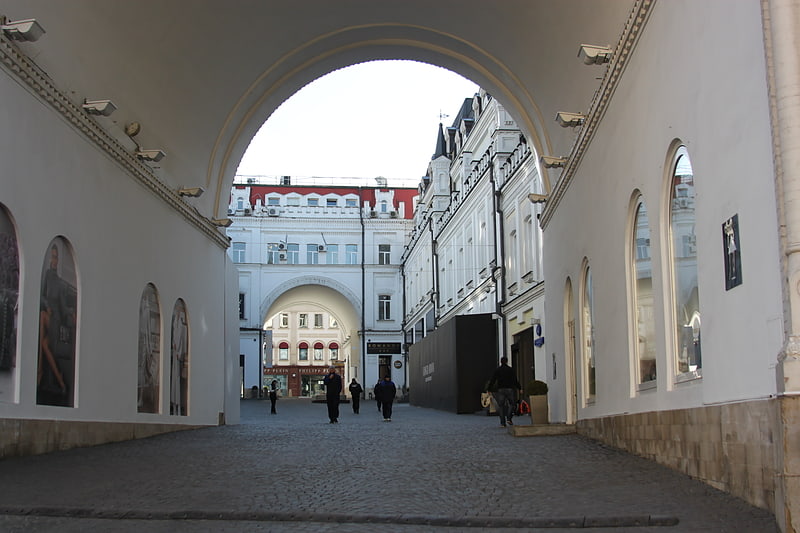
Also known as: Третьяковский проезд
Street in Moscow, Russia. Tretyakovsky Proyezd or Tretyakov Drive is a short street with boutiques and shops with many luxury goods located in Kitai-gorod in Moscow and known as one of the most expensive shopping areas in the world.
The mediaeval-looking archway onto Theatre Drive was designed by architect Alexander Kaminsky (1829–1897) in 1871. The project was financed by Kaminsky's brother-in-law, Pavel Mikhailovich Tretyakov, who was also the founder of the Tretyakov Gallery.
The Tretyakovs' frustration over a blockage on Nikolskaya Street is said to have inspired them to buy the land and revive a Middle Ages thoroughfare from Nikolskaya to the Theatre Drive, across the former Kitai-gorod wall.[30]
Address: Tretyakovsky Proyezd, 109012 Moskva (Центральный административный ок)
House on the Embankment
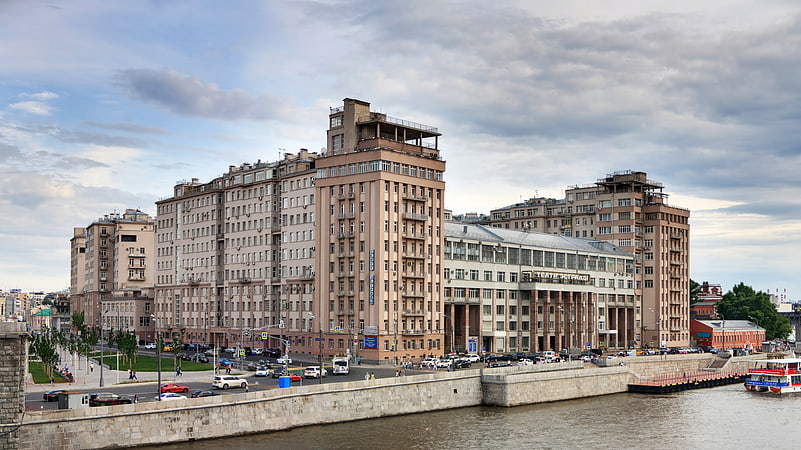
Also known as: Дом на набережной
Apartment in Moscow, Russia. The House on the Embankment is a block-wide apartment building on the banks of the Moskva River on Balchug in downtown Moscow, Russia. It faces Bersenevskaya Embankment on one side and Serafimovicha Street on the other side. Until 1952, it was the tallest residential building in Moscow. It is considered an example of constructivist architecture. It is most known as the place of residence of the Soviet elite, many of whom were arrested and executed during Stalin's Great Purge.[31]
Address: Moscow, 2, Serafimovicha Street
Bakhrushin Museum
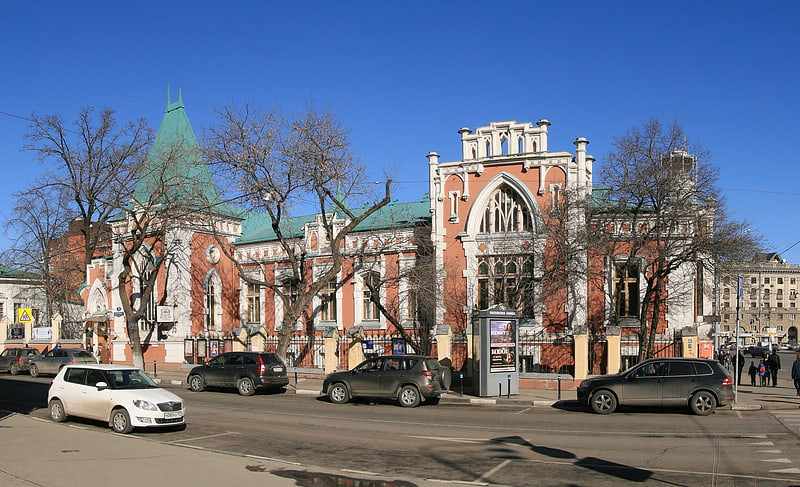
A. A. Bakhrushin State Central Theatre Museum is a museum in Moscow dedicated to the theatre. It was founded in 1894 by the Russian merchant, and philanthropist Alexey Bakhrushin.
The Great Soviet Encyclopedia characterises it as the largest theatre museum in the world.[32]
Address: Zamoskvoreche district,, Moscow (Центральный административный ок)
Manezhnaya Square
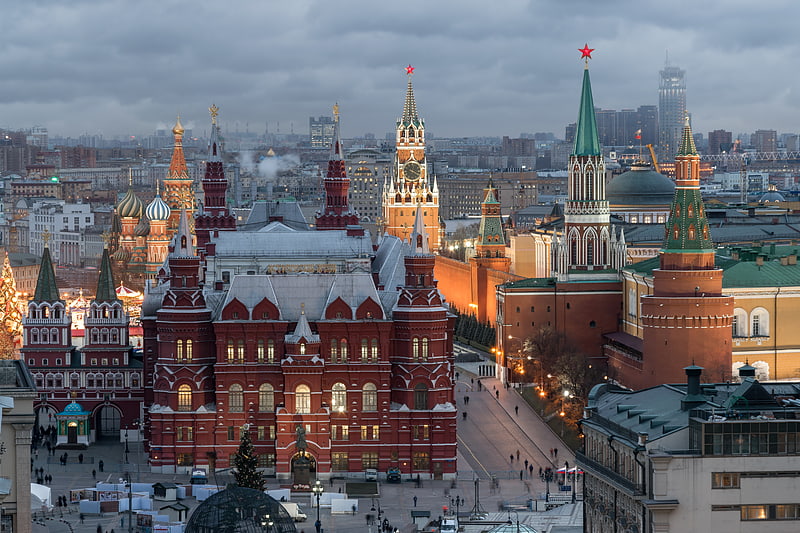
Also known as: Манежная площадь
Manezhnaya is a pedestrian open space in the Tverskoy District, at the heart of Moscow. It is bound by the Hotel Moskva to the east, the State Historical Museum and the Alexander Garden to the south, the Moscow Manege to the west, and the 18th-century headquarters of the Moscow State University to the north.
The square forms a vital part of downtown Moscow, connecting Red Square (which sprawls behind the Iberian Gate immediately to the south) with the major traffic artery Tverskaya Street, which starts here and runs northwestward in the direction of Saint Petersburg. It is served by three Moscow Metro stations: Okhotny Ryad, Ploshchad Revolyutsii, and Teatralnaya.[33]
Monument to the Conquerors of Space

Also known as: Покорителям космоса
Sculpture in Moscow, Russia. The Monument to the Conquerors of Space is a giant obelisk erected in Moscow in 1964 to celebrate achievements of the Soviet people in space exploration. It depicts a starting rocket that rises on its exhaust plume.
The monument is 107 metres tall, has 77° incline, and is made of titanium. The Memorial Museum of Cosmonautics is located inside the base of the monument.[34]
Address: Мемориальный музей космонавтики, 129626 Москва (Северо-Восточный административн)
Cathedral of the Archangel
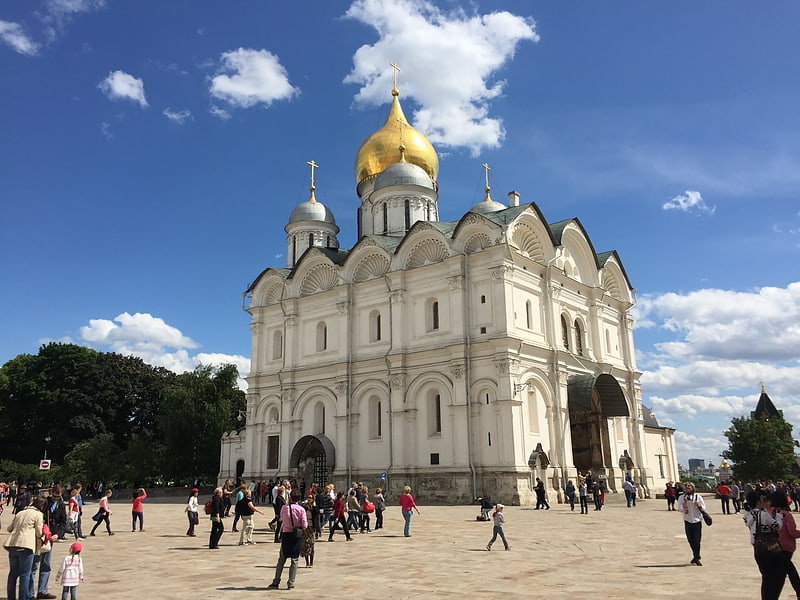
Also known as: Архангельский собор
Church in Moscow, Russia. The Cathedral of the Archangel is a Russian Orthodox church dedicated to the Archangel Michael. It is located in Cathedral Square of the Moscow Kremlin in Russia between the Great Kremlin Palace and the Ivan the Great Bell Tower. It was the main necropolis of the Tsars of Russia until the relocation of the capital to St. Petersburg. It was constructed between 1505 and 1508 under the supervision of an Italian architect Aloisio the New on the spot of an older cathedral, built in 1333. Now it also serves as a part of Moscow Kremlin Museums.[35]
Address: Московский Кремль, 101000 Москва (Центральный административный ок)